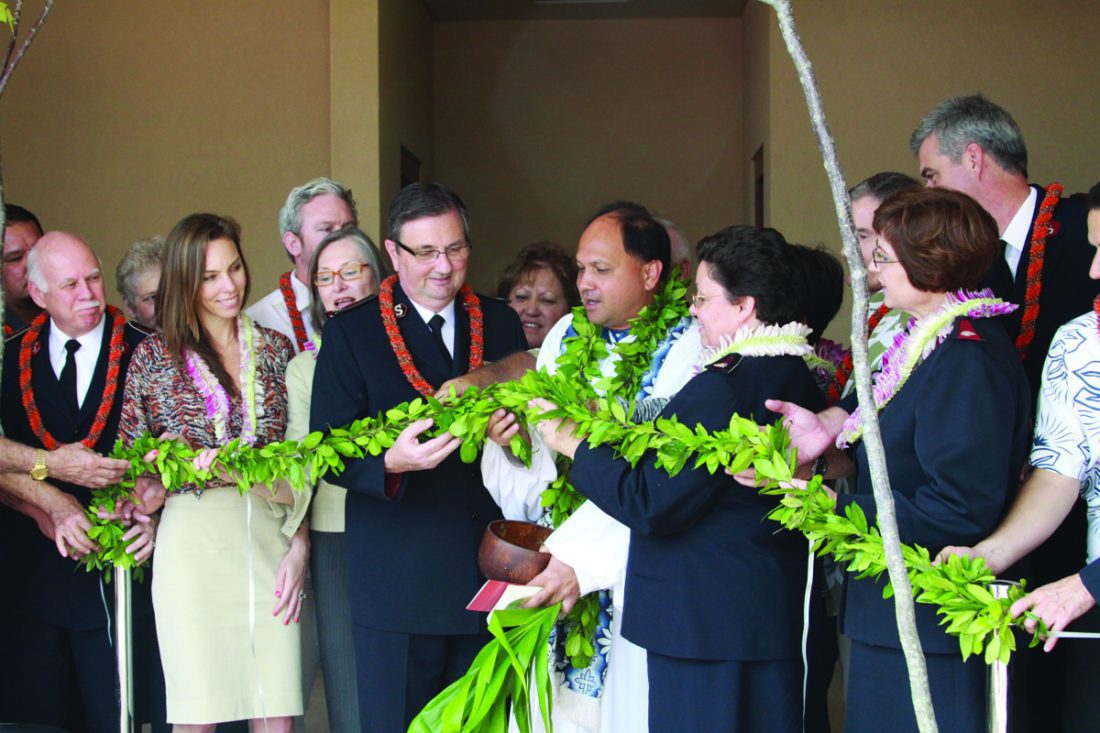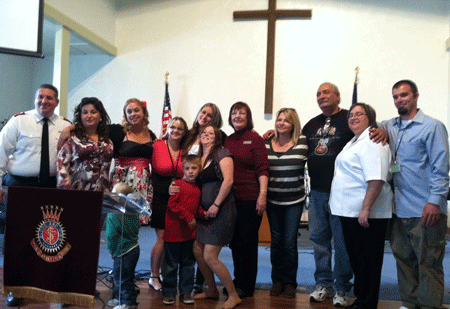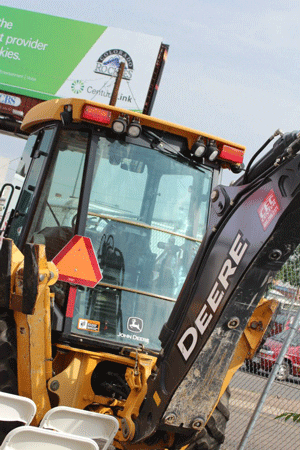Somewhere over the rainbow, in the unincorporated and developing community of Kapolei, Hawaii, a $133 million Salvation Army Ray and Joan Kroc Corps and Community Center now stands.

In 2003, Kroc, widow of McDonald’s founder Ray Kroc, left a $1.5 billion bequest to The Salvation Army to build community centers around the country.
“Before Joan’s dream, The Salvation Army was very much a minimalist organization,” said Commissioner James Knaggs, Western territorial commander. “Her dream has lifted our heads up. She’s shown us what we can do better, for God, with magnificence.”
The Hawaii Kroc Center received a $110 million combined capital and endowment grant from Kroc’s donation and the community raised nearly $23 million locally—a condition of the grant. It is one of 27 centers in the nation.
The Hawaii Kroc Center includes the Harry and Jeanette Weinberg Education and Resource Center with conference and banquet rooms for 720 guests; the Mary D. and Walter F. Frear Early Education Center for 120 preschool students; the 500-seat Jack and Marie Lord Worship and Performing Arts Center; the Clarence T.C. Ching Athletic Center with an NCAA-regulation gymnasium; the First Hawaiian Hale 48-bed dormitory for traveling teams and overnight conferences; a state-of-the-art health and wellness center with workout equipment and facilities for individual and group fitness; an aquatics center featuring a competition pool and a recreation pool with giant water slides; and a 3-acre multipurpose field for outdoor programs.
“This Kroc Center is a treasure of the Hawaiian islands,” Knaggs said. “You can now put an ‘x’ on the map.”
Just over 20 miles from Honolulu, the area was once nothing but sugarcane fields. Today the “second city,” after Honolulu, is growing. As of 2011, Kapolei has a population of nearly 35,000 people, up 38 percent from 2000. An elevated rapid transit line to connect Kapolei with downtown Honolulu and Honolulu International Airport was approved by voters and a groundbreaking ceremony was held in February 2011. At least 1,600 single-family units plus low-income rentals are slated for construction; 400 housing units were recently completed.
“We used the Kroc Center commitment as leverage for other projects [in Kapolei] and drew distance rings in the planning process with the Kroc Center as the ‘piko’—the belly button—of the community,” said Micah Kane, previously the director of the Department of Hawaiian Home Lands (DHHL) and currently a trustee with Kamehemehe Schools.

“It passed unanimously when such a thing would normally be very controversial,” Kane said of the vote in both houses of state government. The Army paid full market value for the agricultural land, totaling $1.5 million for 15 acres.
This process began just after Colonel Dave Hudson, currently chief secretary in the West, was appointed Hawaiian and Pacific Islands divisional commander in mid-2004. With Phil Russell, a National Advisory Board member from Hawaii and president of GMR real estate services, the pair visited businesspeople and politicians to ask for support.
Don Horner, then CEO of the First Hawaiian Bank and chairman of the Hawaii Business Roundtable—a statewide public policy organization comprised of the CEOs and senior executives of companies headquartered or maintaining significant operations in Hawaii, became involved and later agreed to spearhead fundraising $23 million. Horner spent the years that followed ensuring every detail of the project stayed on track as the chairperson of the steering committee, and received The Salvation Army Others Award in 2012 for his efforts.
Murray Bawden, chairman of HSW Enterprises, chaired the construction committee that oversaw work by Hawaii Dredging Construction Company. Group 70 International led the center’s design.
“With this opening, The Salvation Army is launching a friendly invasion of West Oahu, bringing hope, inclusion and light,” said Major Edward Hill, Hawaiian and Pacific Islands divisional commander. The Army began in Hawaii in 1894, and now has 10 corps (churches) in the state plus a number of social services programs.
As of late April, the Kroc Corps expanded to two Sunday services and the center had over 6,800 registered members.
“We are in a dream come true—we can sit in it, can swim in it, can play basketball in it,” Knaggs said. “Other dreams are going to come true because of this center.”

















